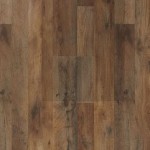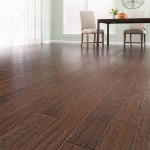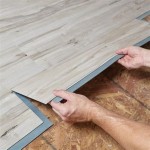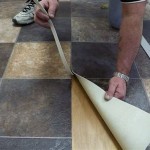Loose Lay Vinyl Plank Flooring Problems: A Comprehensive Overview
Loose lay vinyl plank flooring has gained popularity as a user-friendly and aesthetically appealing option for both residential and commercial spaces. Its ease of installation, coupled with its resemblance to hardwood flooring, has made it a favored choice for DIY enthusiasts and professional installers alike. However, despite its numerous advantages, loose lay vinyl plank flooring is not without its potential problems. Understanding these issues before installation is crucial to ensuring a satisfactory and long-lasting flooring solution. This article provides a comprehensive overview of common problems associated with loose lay vinyl plank flooring.
Subfloor Imperfections and Preparation Challenges
One of the most significant factors impacting the performance of loose lay vinyl plank flooring is the condition of the subfloor. Unlike some other flooring types that can tolerate minor imperfections, loose lay requires a relatively flat and smooth subfloor. Any dips, bumps, or irregularities can telegraph through the planks, creating an uneven surface and potentially leading to premature wear or plank separation. The degree of acceptable imperfection is often specified by the manufacturer, and adherence to these guidelines is critical.
Proper subfloor preparation is paramount to mitigate these risks. This preparation may involve a variety of steps, depending on the existing subfloor material and its condition. For concrete subfloors, this often includes patching cracks and leveling uneven areas with a self-leveling compound. Wooden subfloors may require sanding down high spots, filling in gaps, and ensuring the subfloor is structurally sound. Loose or damaged subfloor panels should be replaced or repaired before proceeding with the installation. Furthermore, thorough cleaning of the subfloor is essential to remove any debris, dust, or contaminants that could interfere with the planks' ability to properly grip the subfloor.
Another aspect of subfloor preparation is moisture testing. Excessive moisture in the subfloor can lead to a variety of problems, including adhesive failure (if using a perimeter adhesive), mold growth, and warping of the planks themselves. Moisture testing helps determine if the subfloor is within acceptable moisture content levels, and if not, appropriate mitigation measures must be taken before installing the flooring. These measures might include applying a moisture barrier or allowing the subfloor to dry out naturally over a sufficient period of time.
Failure to adequately prepare the subfloor can result in a range of issues, including: visible imperfections in the finished floor, increased noise when walking on the floor, premature wear and tear, and even complete failure of the flooring system. Therefore, investing the necessary time and effort into subfloor preparation is a crucial pre-requisite for a successful loose lay vinyl plank flooring installation.
Movement and Gapping Issues
Due to its installation method, loose lay vinyl plank flooring is more susceptible to movement and gapping than flooring systems that are glued down or mechanically fastened. This is because the planks are not secured to the subfloor across their entire surface area, relying instead on their weight and friction, and sometimes optional perimeter adhesive, to stay in place. Several factors can contribute to these movement and gapping issues.
Temperature fluctuations are a significant concern. Like all materials, vinyl expands and contracts with changes in temperature. In environments with significant temperature swings, the planks may expand to the point where they buckle or contract enough to create noticeable gaps between the planks. It is therefore crucial to maintain a consistent temperature range in the installed area, especially during the initial period after installation. Manufacturers often recommend a specific temperature range for optimal performance, and adherence to these recommendations is important.
Heavy furniture and foot traffic can also contribute to movement and gapping. Heavy objects placed directly on the flooring can exert pressure that causes the planks to shift over time. Similarly, high foot traffic areas are more prone to plank movement, especially if the subfloor is not perfectly level. Using furniture pads under heavy items and strategically placing rugs in high-traffic areas can help to mitigate these issues.
The quality of the vinyl plank itself plays a role in its susceptibility to movement. Thicker and more rigid planks tend to be more stable and less prone to movement than thinner, more flexible planks. Investing in higher-quality planks, even if they come at a higher initial cost, can often result in a more durable and stable flooring system over the long term. Furthermore, some loose lay vinyl plank products are designed with interlocking edges that provide a tighter fit and greater resistance to movement. These interlocking systems can offer a superior performance compared to traditional straight-edge planks.
The installation technique can also influence the amount of movement and gapping. While loose lay flooring is designed for easy installation, proper technique is still essential. Planks should be tightly butted together during installation, and sufficient expansion gaps should be left around the perimeter of the room to allow for expansion and contraction. Failure to follow these guidelines can lead to excessive stress on the planks and increased likelihood of movement and gapping.
Adhesive Issues and Perimeter Bonding
While the defining characteristic of loose lay vinyl plank flooring is its ability to be installed without full adhesive application, some installations may benefit from, or even require, the use of perimeter adhesive. This involves applying adhesive only around the edges of the room to secure the planks in place and prevent movement. While perimeter bonding can help to stabilize the flooring, it also introduces the potential for adhesive-related problems.
Selecting the correct type of adhesive is crucial. Not all adhesives are compatible with vinyl plank flooring, and using the wrong adhesive can lead to a variety of problems, including: adhesive failure, discoloration of the planks, and difficulty removing the flooring if necessary. It is essential to consult the flooring manufacturer's recommendations and choose an adhesive that is specifically designed for use with loose lay vinyl plank products. Furthermore, the adhesive should be compatible with the subfloor material to ensure a strong and lasting bond.
Proper adhesive application is also critical. Applying too much adhesive can create a messy installation and make it difficult to properly align the planks. Applying too little adhesive may not provide sufficient holding power, leading to movement and gapping. The adhesive should be applied in a thin, even layer, following the manufacturer's instructions regarding coverage rate and open time. Open time refers to the amount of time the adhesive needs to sit before the planks are installed. Proper open time allows the adhesive to become tacky, resulting in a stronger bond.
Adhesive failure can occur due to a number of factors, including: improper subfloor preparation, excessive moisture, contamination of the adhesive, and the use of an incompatible adhesive. When adhesive failure occurs, the planks may lift or shift, creating an uneven and unsightly floor. Addressing adhesive failure typically involves removing the affected planks, cleaning the subfloor, and re-applying the adhesive using the correct product and application technique.
Even with proper adhesive selection and application, perimeter bonding can sometimes create challenges during removal. Because the planks are adhered to the subfloor along the perimeter, removing them may require more effort and could potentially damage the subfloor. Therefore, it is important to consider the long-term implications of using perimeter adhesive, especially if there is a possibility that the flooring may need to be replaced in the future.
Loose Lay Vinyl Plank Flooring Pros Cons Floorings

What Is Loose Lay Vinyl Flooring A Plank Guide Reallyfloors America S Est Hardwood

17 Problems With Loose Lay Vinyl Flooring Tidy Floor

What I Ve Learned As An Inspector For Luxury Vinyl Flooring Wood Floor Business

My Vinyl Plank Floor Review Two Years Later Cutesy Crafts

The Pros And Cons Of Loose Lay Vinyl Plank Flooring

My Vinyl Plank Floor Review Two Years Later Cutesy Crafts

What I Ve Learned As An Inspector For Luxury Vinyl Flooring Wood Floor Business
Loose Lay Vinyl Plank Flooring Pros Cons Floorings

How To Fix Vinyl Plank Flooring








